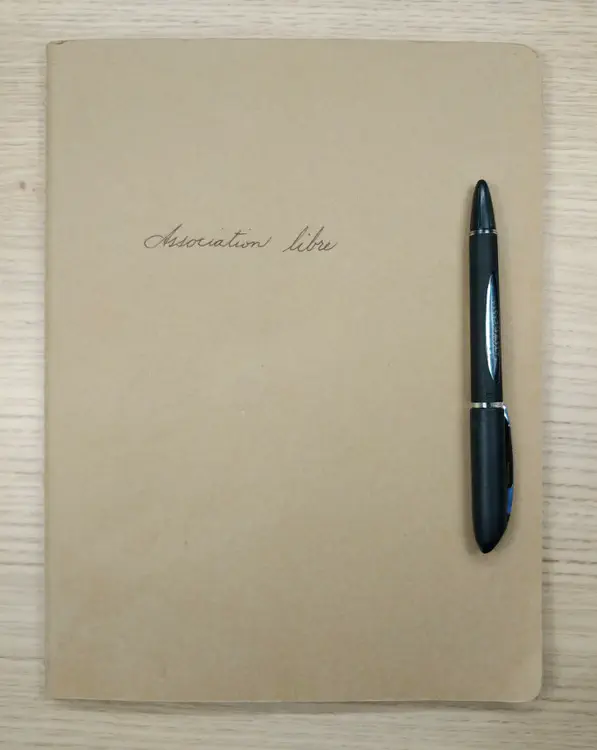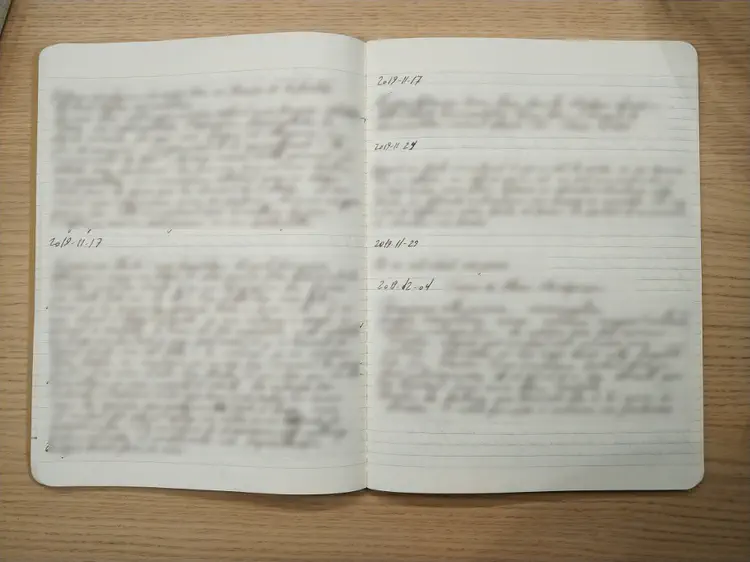Free Associations
My writing systems
This page is part of a series on journaling.
Introduction
My free associations journal is a notebook where I write thoughts, without any conscious intent or goal. The writing process is spontaneous and unfiltered. Sometimes, this is called “automatic writing” or “stream of consciousness”. It is often used in creative processes and in psychotherapy.
It’s a type of capture journal. Therefore, its content raw material for further thinking or processing. Sometimes, I use this journal to write draft thoughts that I can’t yet articulate coherently, or thoughts that seem interesting but for which I don’t know the conclusion.
Theory and benefits
Associative thoughts, according to psychoanalysts, are not random. Co-emergence of seemingly independent ideas are worth analyzing and investigating for meaning.
Additionally, this exercise often makes new ideas emerge, brings back forgotten personal stories, and brings new meaning or even new realizations to past experiences.
Material
I use a Moleskine Cahier Journal, Set of 3 Large Ruled sur (Amazon.ca). I chose this format over the traditional Notebook because this writing style generates a lot of text, and the internal structure is not important.
I write with a fountain pen. This sets the mind to writing forward, with fluidity and without going back. See also: Writing instruments.
Methodology
I try to do this once per week. I start a 10 minutes timer, and I write without stopping until the timer elapses. This is a kind of meditation. To dream awake, but with a conscious process that reports everything and anything it sees on the paper, without identifying itself with the content.
Matthew Dicks talks about this exercise in his book Storyworthy. He calls it “dreaming at the end of your pen” or “crash and burn” (because as soon as a new idea emerges, the previous idea is immediately abandoned to begin capturing the new idea).
There are three rules:
- You must not get attached to any one idea.
- You must not judge any thought or idea that appears in your mind.
- You cannot allow the pen to stop moving.
On rule #3, when I don’t know what to write, I just start naming whatever my wandering attention is scanning: hand, page, table, fly, mug… Sometimes I write out numbers sequences: one, two, three, four, five… You could also do this with colours, names, etc.
Méthodologie
- 1 fois par jour, ou au moins 1 fois par semaine.
- Activer un minuteur de 10 minutes puis écrire sans s’arrêter jusqu’à ce que le temps soit écoulé.
- Écrire sans jugement ni attachement, il ne faut pas que le stylo ne cesse d’écrire.
- C’est une sorte de méditation. Rêver éveillé, mais avec un processus conscient qui rapporte ce qu’il constate sur le papier, sans s’y identifier ou s’y attacher émotionnellement.
- Matthew Dicks en parle dans son livre Storyworthy.
Il appelle ça “dreaming at the end of your pen” ou “crash and burn” (parce que lorsqu’une nouvelle idée émerge, la précédente est immédiatement abandonnée).
Il a 3 règles:
- You must not get attached to any one idea.
- You must not judge any thought or idea that appears in your mind.
- You cannot allow the pen to stop moving.
- Concernant la règle No 3, lorsque je ne sais pas quoi écrire, je nomme simplement où mon attention vagabonde. Main, page, table, mouche, tasse… J’ai essayé aussi avec des nombres écrits en lettres. Un, deux, trois, quatre, cinq… Ça pourrait être des couleurs, des noms propres.
Method 1: without prompt
- Activate a 10 minutes timer.
- Start writing.
- There are three rules:
- You must not get attached to any one idea.
- You must not judge any thought or idea that appears in your mind.
- You cannot allow the pen to stop moving.
- After 10 minutes, stop writing your last thought.
Method 2: with a prompt
Free associations is also used in dreams analysis, problem solving, or to reveal hidden emotions.
Here is an example of dream analysis technique. I re-read my dream narrative, and I try to feel the sequence of feelings and emotions I felt in my dream. Then, I do 10 minutes of free associations, without attachment to the dream content.
The same exercise can help with post-processing an intense social activity, or a recurring daydream.

